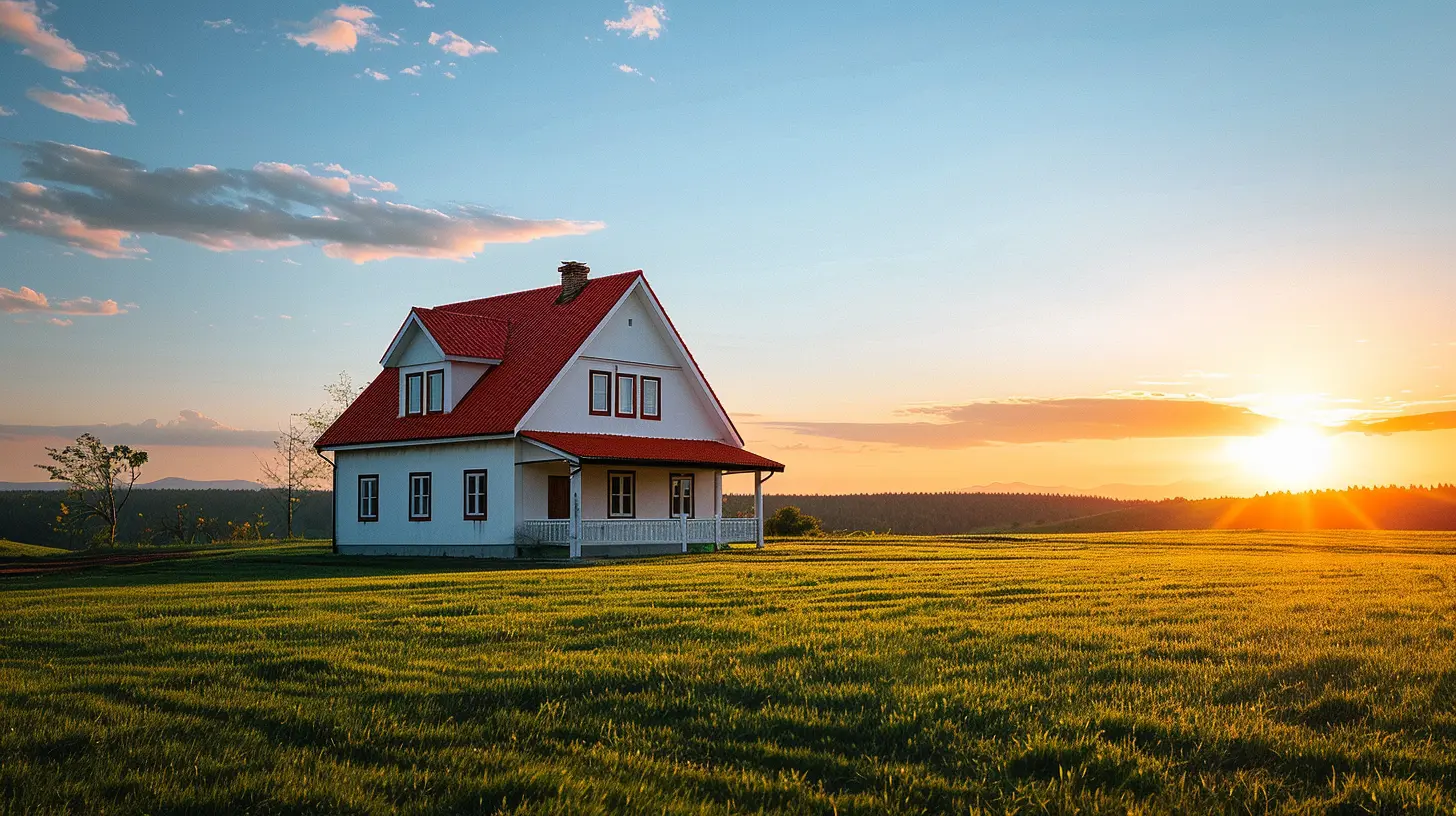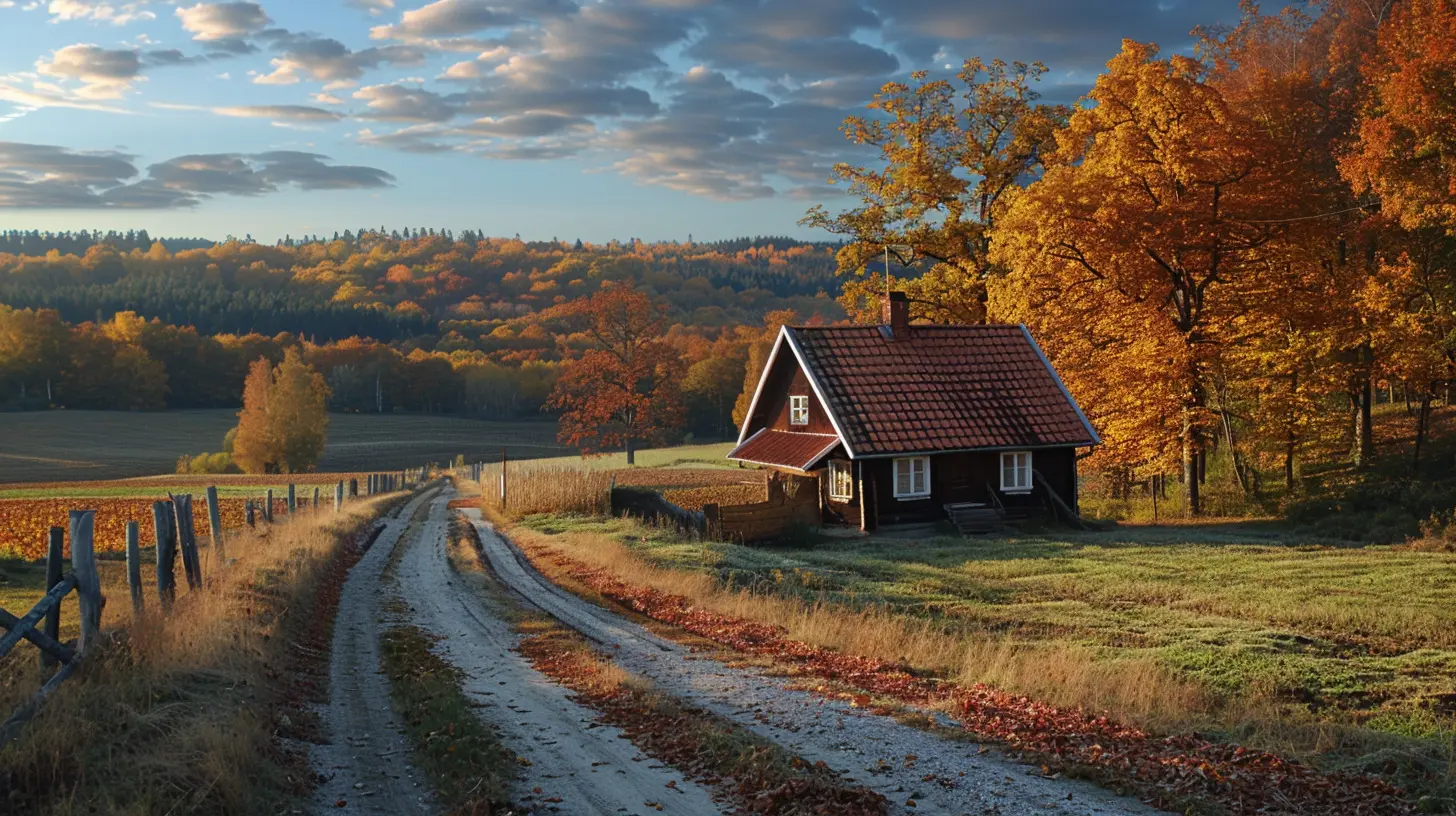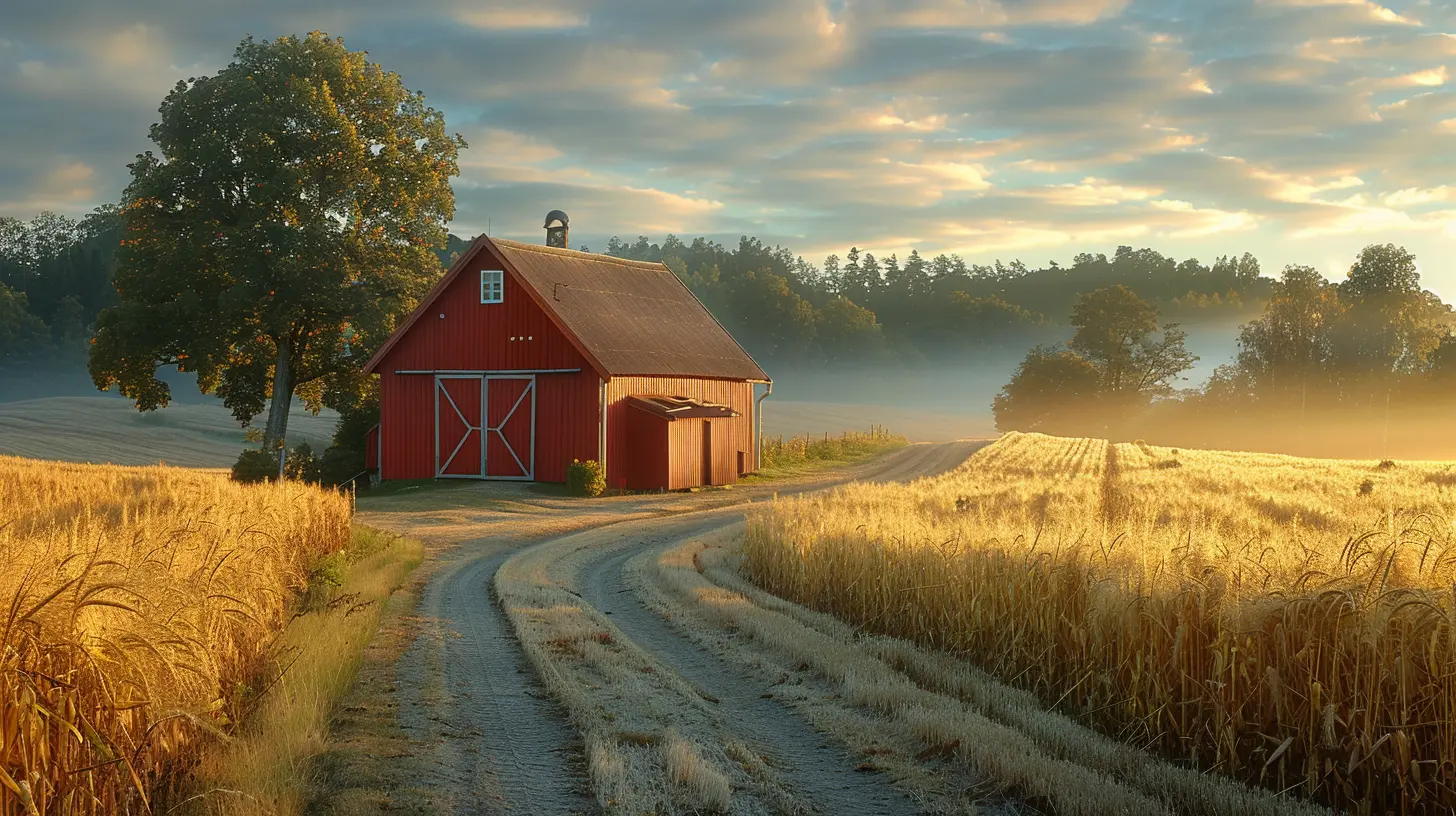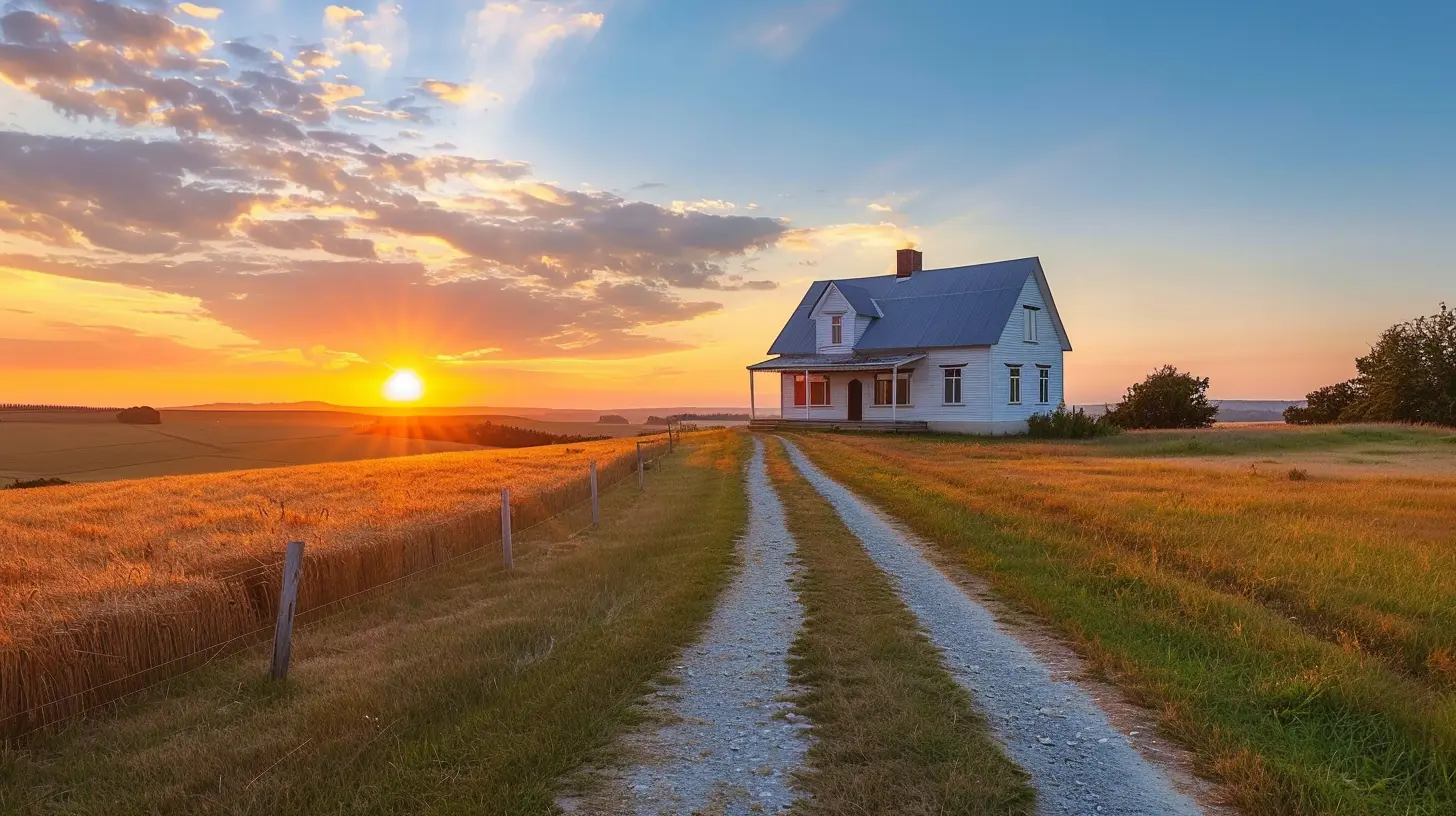Key Factors Driving Rural Property Demand in the Coming Years
31 December 2024
Rural properties once painted nostalgic pictures of charming countryside cottages and sprawling farmlands, seemingly far removed from the daily hustle of metropolitan life. But here’s the kicker: rural real estate is having its moment. With more people turning their eyes toward quieter, greener pastures, the demand for rural properties is climbing. What’s fueling this trend? Well, grab a cup of coffee, settle in, and let’s dive into what’s driving this shift to rural living. 
1. The Pandemic's Ripple Effect
You probably saw this one coming, right? The pandemic turned our lives upside down, and for real estate, it flipped the script, too. When lockdowns confined us to our homes, the bustling city that once seemed dynamic started feeling a little suffocating. Enter rural properties—a breath of fresh air, quite literally.Remote work became the norm, and suddenly, that long commute wasn’t necessary. People began asking themselves, “If I can work anywhere, why not work where the air’s cleaner, the views are better, and my closest neighbor isn’t just a few feet away?” Living in the countryside became not just desirable but feasible. People craved more space, privacy, and the ability to step into nature without stepping out of bounds.
And it wasn’t just families feeling this pull. Millennials, often labeled as city-loving nomads, also started embracing the idea of rural living. Why? Because rural life promised something cities couldn’t always offer—a sense of serenity and space for personal growth. 
2. The Rise of Remote Work
Let’s face it, remote work has revolutionized everything. Employers and employees alike realized that productivity wasn’t tied to cubicles or swanky office buildings. As long as there’s a laptop and a decent Wi-Fi connection, work can happen from anywhere—even from amidst rolling hills or a log cabin in the woods.Plus, with fewer commutes, people rediscovered hours in their day they didn’t even know existed. Rural living reclaimed the spotlight as people dreamed of swapping the concrete jungle for sprawling gardens, open fields, or even their own quaint slice of farmland.
In fact, some companies are even encouraging remote work policies permanently. With this shift, rural areas have become hotspots for professionals balancing a career with quality of life. Think about it—who wouldn’t want to take Zoom calls with lush greenery in the background instead of a drab white wall? 
3. Affordability and Space
Ever tried looking at urban real estate prices? It’s like staring at a mountain you can’t climb. Cities are expensive—there’s no sugarcoating it. Apartments are small, cramped, and overpriced. But in rural areas? You get much more bang for your buck.Imagine owning a house with a spacious backyard, maybe even a few acres of land, for less than the price of a tiny city studio. Sounds dreamy, doesn’t it? This affordability is what’s pulling people to rural areas.
And let’s not forget the added bonus: space. Urban living often involves sharing walls, elevators, and parking spots. But rural properties? They come with breathing room. Need a home office, a gym, or even a small hobby farm? Done. A larger home in a quiet setting isn’t just a want anymore—it’s a reachable reality. 
4. The Quest for Nature and Wellness
Do you ever feel like the concrete cityscape is just disconnecting you from nature? You’re not alone. People are yearning for greenery, fresh air, and a connection to the great outdoors. This trend goes hand-in-hand with the growing awareness around mental health and wellness.In rural areas, nature is at your doorstep. You’ve got hiking trails, rivers, forests, and wide-open skies—all without needing to schedule a weekend getaway. And as research continues to show how beneficial spending time outdoors is for our mental health, rural living has become a no-brainer for those looking to prioritize their well-being.
It’s not just about physical health either. Living away from the constant hum of traffic or the neon-lit buzz of city life can reduce stress. Think of it as nature’s therapy session—calming, rejuvenating, and free of charge.
5. Technological Advancements in Rural Areas
Here’s another game-changer: rural areas aren’t as disconnected as they used to be. Thanks to advancements in technology, many rural properties now boast reliable high-speed internet, a factor that was once a major drawback to countryside living.Modern infrastructure—like cell towers, better roads, and even access to online shopping and delivery services—has made rural living significantly more convenient. No longer does living in the countryside mean being “off the grid.” Now, it’s about enjoying the perks of nature without sacrificing modern amenities.
One big player here is satellite internet providers like Starlink, which are bringing fast, reliable internet to even the most remote corners of the world. So, if you’ve been holding off on rural living because you were worried you’d have no Netflix or slow Zoom calls, fret no more.
6. Sustainability and Self-Sufficiency
Speaking of trends, have you noticed how everyone wants to go “green” these days? From electric cars to composting, sustainability has become a major focus. Rural properties naturally complement this movement.Why? Because rural living offers the perfect opportunity to adopt an eco-friendly lifestyle. You’ve got space for solar panels, room to grow your own vegetables, and the potential for raising chickens or starting a mini orchard. You can even live partially off the grid if you want.
More people are also interested in self-sufficiency. After the pandemic spotlighted supply chain vulnerabilities, many began considering the idea of becoming less reliant on big grocery store chains or urban infrastructure. Rural properties make this dream of self-reliance seem super achievable. Plus, there’s something deeply satisfying about growing your own food or having a sustainable, zero-waste home.
7. Evolving Buyer Priorities
Let’s talk about a mindset shift. People today value experiences over material possessions. While cities were once seen as hubs of excitement and opportunities, many are starting to see rural living as offering a richer experience.In rural areas, you get the chance to connect with your surroundings, build communities, and live more intentionally. The slower pace of life appeals to those longing for a reset. After all, when was the last time you paused to enjoy a sunset, sip your coffee in silence, or listen to nothing but the wind?
Moreover, with the rise of multigenerational living, rural properties provide the space needed for extended families to coexist comfortably. Whether it’s aging parents moving in or kids needing more outdoor play areas, rural homes make it easier to accommodate these lifestyle changes.
8. Tourism and Investments in Rural Areas
Here’s a fun fact: rural areas are no longer just for living. They’re investment goldmines. With travel restrictions easing, tourism is booming, especially the kind that encourages people to explore less-crowded destinations.From farm stays to quaint bed-and-breakfasts, rural properties are being transformed into income-generating assets. Investors are eyeing these spaces for their potential to tap into the growing demand for unique, nature-driven travel experiences.
Even if tourism isn’t on your radar, buying rural property can be a long-term financial win. With demand rising and supply remaining relatively fixed, property values in rural areas are expected to appreciate over time. Think of it as planting seeds today that’ll grow into something valuable tomorrow (pun intended!).
9. Government Incentives and Policies
Another factor contributing to rural property demand is government-backed initiatives encouraging rural living. Some governments offer tax incentives, grants, or subsidies designed to boost rural development and attract populations to less densely populated areas.These policies can make rural properties even more affordable while supporting infrastructure development in these regions. It’s a win-win situation: buyers get great deals, and rural areas get the population influx needed to thrive.
Wrapping It Up: Is Rural Living Right for You?
So, what’s the bottom line? Rural property demand is surging, and it’s not hard to see why. From remote work and affordable spaces to a renewed focus on wellness and sustainability, rural living checks a lot of boxes for today’s buyers.If you’ve been dreaming of wide-open spaces, tranquil mornings, and a lifestyle that prioritizes quality over chaos, now might be the perfect time to make the leap. Pack your bags, lace up your boots, and get ready to embrace the countryside—it might just be the fresh start you’re looking for.
all images in this post were generated using AI tools
Category:
Real Estate ForecastAuthor:

Mateo Hines
Discussion
rate this article
15 comments
Clara McClure
Turns out, fresh air and peace are the new Wi-Fi! Who knew trees could be so appealing?
February 1, 2025 at 1:41 PM

Mateo Hines
Absolutely! The allure of nature and tranquility is becoming increasingly important as people seek refuge from urban chaos.
Zeno Moses
This article effectively highlights the pivotal factors influencing rural property demand, such as remote work trends, lifestyle shifts, and increased homebuyer interest in sustainability. Understanding these drivers can help buyers and investors make informed decisions, capitalizing on the growing appeal of rural living in today’s market. Great insights!
January 25, 2025 at 4:06 AM

Mateo Hines
Thank you for your thoughtful comment! I'm glad you found the insights on rural property demand valuable.
Samuel Alexander
With remote work becoming the norm, rural properties are the perfect blend of space and tranquility!
January 20, 2025 at 3:57 AM

Mateo Hines
Absolutely! The shift to remote work highlights the appeal of rural properties, offering spaciousness and serenity that urban living often lacks.
Mindy Hamilton
Rural properties are the new unicorns of real estate! With city slickers trading skyscrapers for starry skies, the demand is fueled by a quest for fresh air, garden gnomes, and a Wi-Fi signal strong enough to stream cat videos! Who knew greenery could be so glamorous?
January 14, 2025 at 12:06 PM

Mateo Hines
Absolutely! The allure of rural living, driven by a desire for space, nature, and modern conveniences, is reshaping the real estate landscape.
Dahlia McNair
Interesting insights! I wonder how remote work trends and urban-to-rural migration will impact property prices. Are there specific regions you see becoming hotspots for rural real estate?
January 8, 2025 at 8:38 PM

Mateo Hines
Thank you! Regions with strong internet connectivity and access to amenities, like the Midwest and parts of the South, are likely to emerge as hotspots for rural real estate as remote work continues to rise.
Remi McFadden
Great insights! As urban dwellers seek more space and tranquility, understanding these key factors will be crucial for investors and buyers alike in navigating the evolving rural property market.
January 6, 2025 at 4:28 AM

Mateo Hines
Thank you! I'm glad you found the insights valuable. As urbanites prioritize space and tranquility, these factors will indeed shape the future of the rural property market.
Noelle Acevedo
Rural property demand will rise due to remote work and lifestyle changes.
January 3, 2025 at 9:10 PM

Mateo Hines
Absolutely! The shift to remote work and changing lifestyle preferences are key drivers, making rural properties increasingly attractive for those seeking space and a different quality of life.
Zorina Curry
As urban congestion drives people to seek tranquility, key factors such as remote work flexibility, affordable living, and enhanced connectivity are fueling rural property demand. This shift not only redefines lifestyle choices but also presents unique investment opportunities in emerging rural markets.
January 3, 2025 at 1:10 PM

Mateo Hines
Thank you for your insightful comment! Indeed, the shift towards rural living is reshaping lifestyle choices and investment landscapes, highlighting the importance of flexibility, affordability, and connectivity in driving this demand.
Joel McGill
Great article! It's fascinating to see how factors like remote work, lifestyle changes, and affordable living are reshaping rural property demand. As more people seek a balanced life away from the city bustle, rural areas are sure to thrive. Exciting times ahead for rural real estate!
January 3, 2025 at 5:49 AM

Mateo Hines
Thank you! I'm glad you found it interesting. Indeed, these trends are creating a dynamic shift in rural real estate, and it's exciting to see how this will evolve.
Aubrey Mullen
Great article! It highlights important trends in rural property demand that can benefit both buyers and investors. Exciting times ahead!
January 2, 2025 at 9:17 PM

Mateo Hines
Thank you! I'm glad you found the article insightful and valuable for both buyers and investors. Exciting times indeed!
Audrey Shaffer
Exciting times lie ahead for rural real estate! As more people seek tranquility and nature, the demand for rural properties is set to soar. Embrace the shift and seize the opportunity to invest in these serene escapes. The future is bright for rural living—let's make the most of it!
January 2, 2025 at 1:23 PM

Mateo Hines
Absolutely! The shift towards rural living is a significant trend, driven by the desire for tranquility and access to nature. This growing demand presents a unique investment opportunity in the rural real estate market. Let's embrace this exciting future!
Shania McFarlin
In whispers of nature's embrace, Rural dreams find their space. Amidst the fields, a longing grows, Where peace and breath of freedom flows.
January 1, 2025 at 12:16 PM

Mateo Hines
Thank you for capturing the essence of rural living! The increasing desire for peace and nature is indeed a key driver of rural property demand.
Anika McKeehan
This article raises intriguing points about the shifts in rural property demand! What specific factors, such as remote work trends or lifestyle changes, are influencing buyers? I'm curious about how these trends might reshape community dynamics and the real estate market in the future!
January 1, 2025 at 5:40 AM

Mateo Hines
Thank you for your insightful comment! Key factors influencing rural property demand include the rise of remote work, a desire for more space, and shifts toward sustainable living. These trends are likely to foster tighter-knit communities and reshape local economies as more people seek a balance between work and lifestyle.
Amira Turner
Great insights on rural property demand! It’s fascinating to see how factors like remote work and lifestyle changes are reshaping the real estate landscape. As someone who appreciates the charm of rural living, I believe these trends will continue to drive interest and growth in these communities. Thanks for sharing!
December 31, 2024 at 9:50 PM

Mateo Hines
Thank you! I’m glad you found the insights valuable. The shift towards rural living truly is an exciting trend!
Vance Lawrence
Great insights! Understanding these trends can truly help families find their ideal rural homes and communities.
December 31, 2024 at 4:57 AM

Mateo Hines
Thank you! I'm glad you found the insights helpful for families seeking their perfect rural home.
MORE POSTS

Building Your Home from the Ground Up: Tips for Working with Builders

How to Incorporate Bold Art Pieces into Minimalist Spaces

The Rise of Online Real Estate Scams and How to Stay Safe

The Role of Supply and Demand in Shaping Market Cycles

How Transit-Oriented Development is Transforming Major Cities

Boosting Property Appeal With Minimalist Virtual Staging Techniques

Eco-Friendly Exterior Solutions: Siding, Roofing, and Beyond

The Future of Mortgage Lending: What Buyers Can Expect

Tips for Downsizing Without Compromising on Comfort

Protecting Yourself from Fake Real Estate Investment Seminars